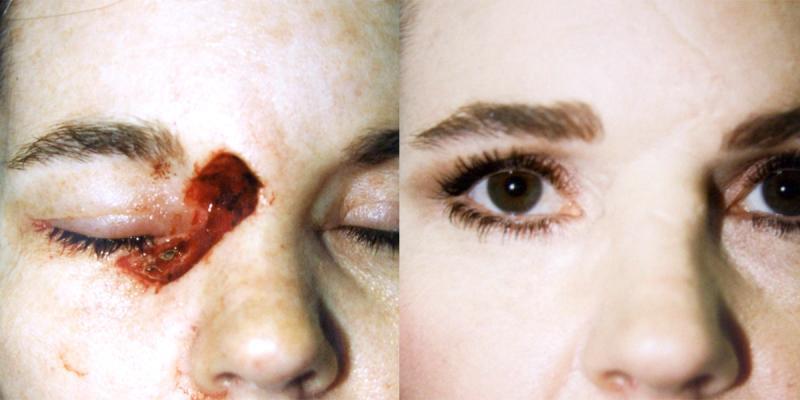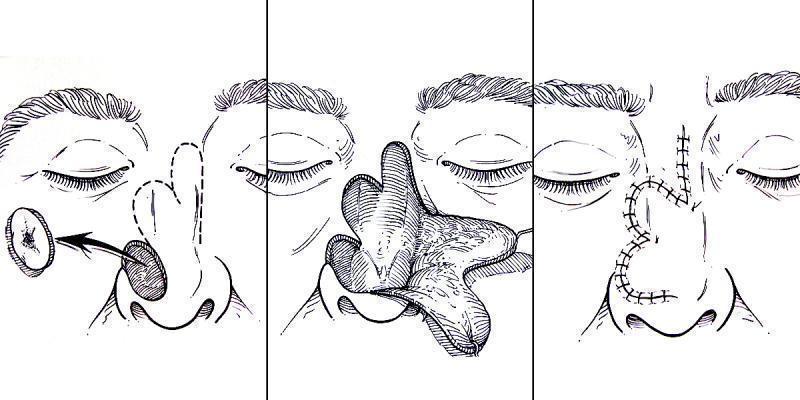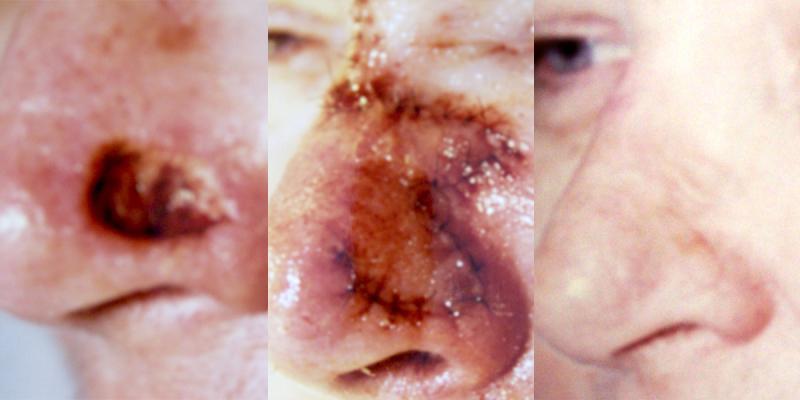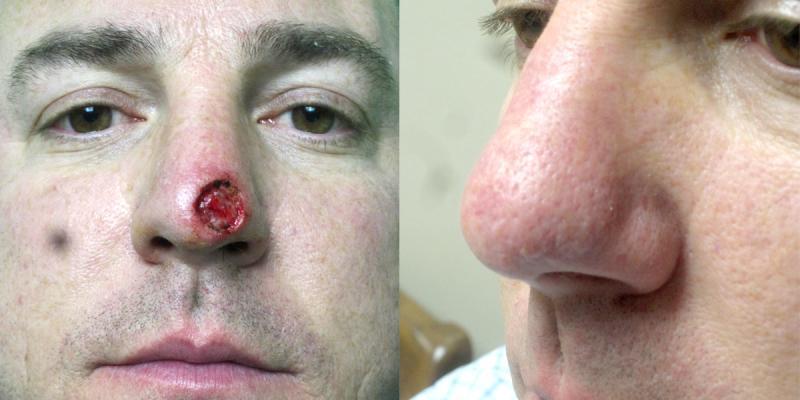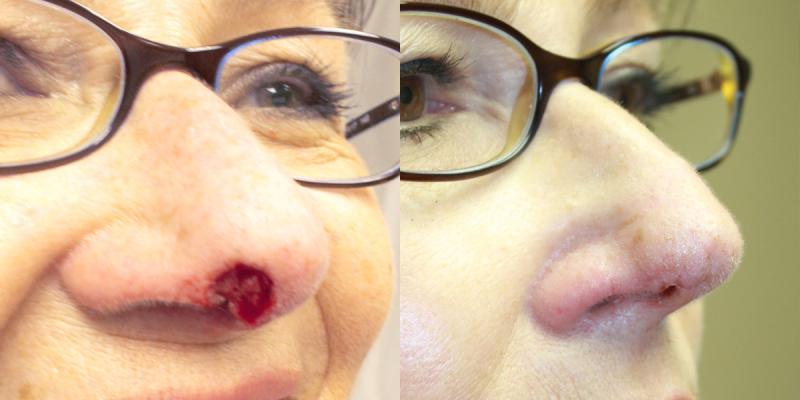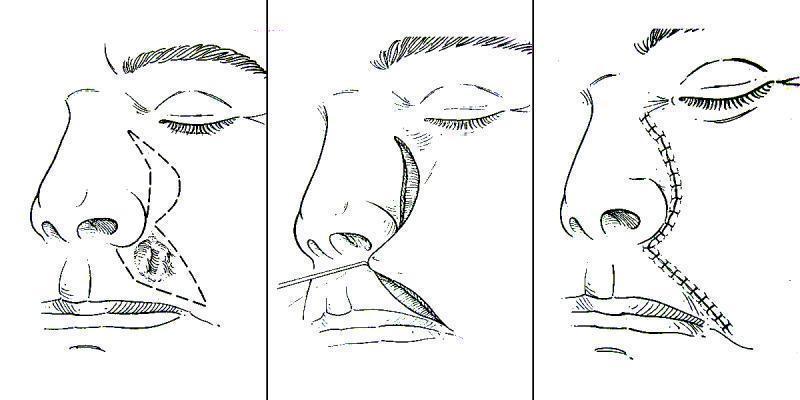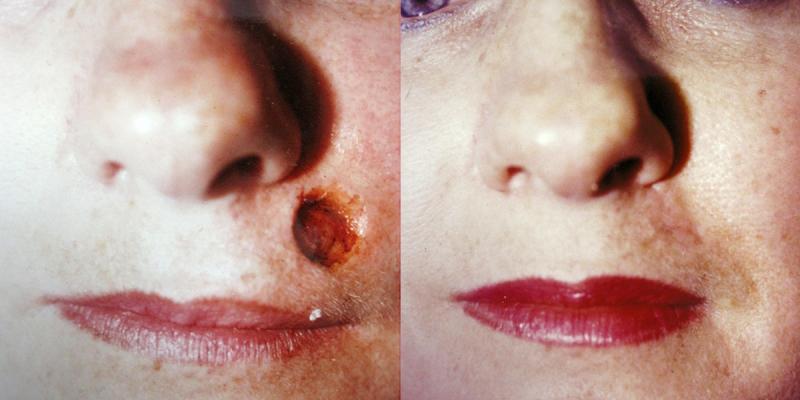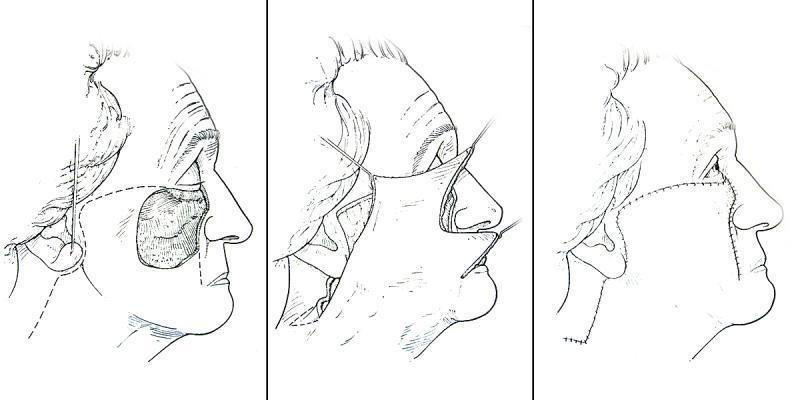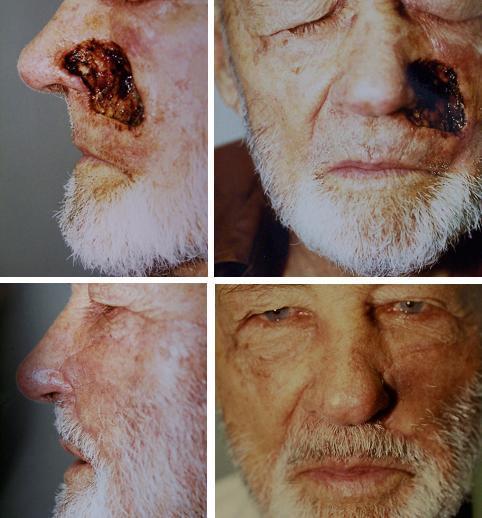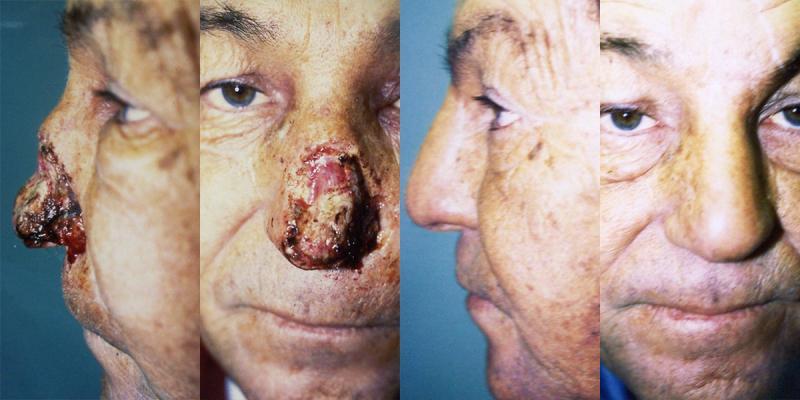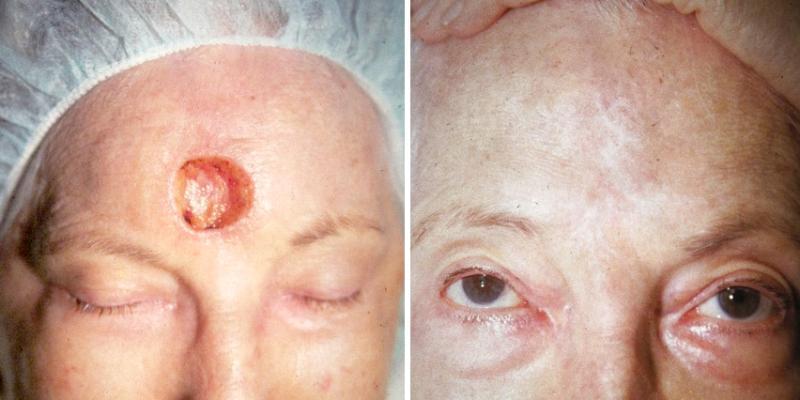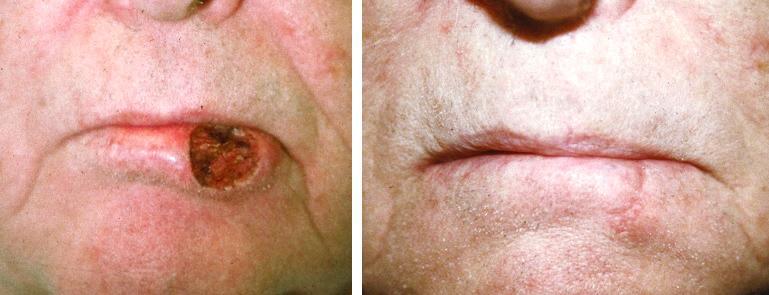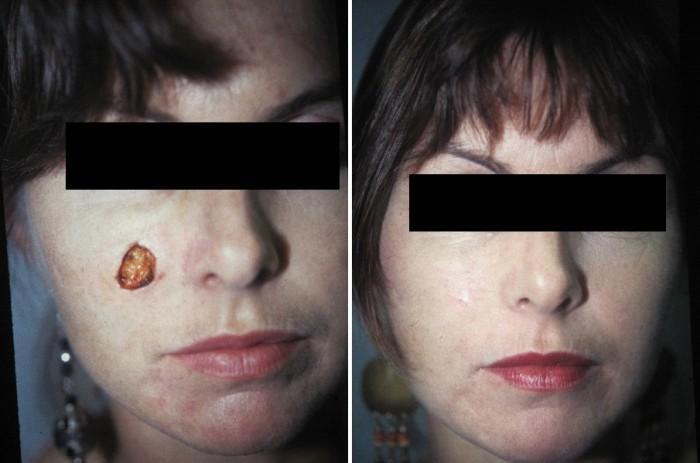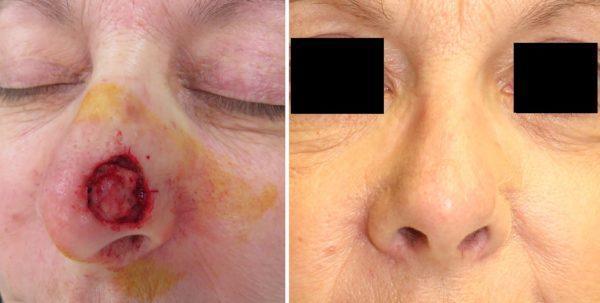

Skin Cancer
Care for the most
Types of skin cancers
When can you get in?
Dr. Harris can meet with you the same week—sometimes the same day—after you call.
How long is recovery?
Recovery varies from patient to patient. Most skin cancer surgeries are performed on an outpatient basis under local anesthetic. You will need to take it easy for several days after the surgery.
SKIN CANCER is the most common form of cancer in the United States. More than 500,000 new cases of skin cancer are diagnosed in the United States each year, and the incidence of skin cancer is rising faster than any other type of cancer.
About 80 percent of new skin cancer cases are basal cell carcinoma, 16 percent squamous cell carcinoma, and four percent melanoma. While skin cancers can be found on any part of the body, about 80 percent appear on the face, head, or neck, where they can be disfiguring as well as dangerous. Excessive sun exposure over time can result in skin cancer.
To diagnose skin cancer, all or part of the growth is removed and examined under a microscope. It can be treated by a number of methods, depending on the type of cancer, its stage of growth, and its location on your body. Most skin cancers are removed surgically. If the cancer is small, the procedure can be done quickly in Dr. Harris’ facility, using local anesthesia.
The first priority in the treatment of skin cancer is to entirely remove the cancerous cells. The second priority is to reconstruct the removal site so that it looks and functions as normally as possible–a good reason to have a board-certified plastic surgeon take care of your skin cancer problems.
Basal Cell Carcinoma
Basal cell carcinoma is the most common type of skin cancer on the face. Fortunately, it is the least dangerous kind of skin cancer. It tends to grow slowly, and it rarely spreads beyond its original site. Though basal cell carcinoma is seldom life threatening, if left untreated, it can grow deeply beneath the skin and into the underlying tissue and bone, causing serious damage (particularly if it is located near the eye).
Squamous Cell Carcinoma
Squamous cell carcinoma is the next most common type of skin cancer, and it is usually found on areas other than the face. It rarely spreads to distant sites, but it can be life-threatening if not treated.

Typical basal cell carcinoma may look like a sore that won’t heal or have a “heaped up”, pearly appearance. Squamous cell carcinoma can look like a red spot. Beware of crusty, scaling, enlarging or bleeding lesions.
Basal and squamous cell carcinomas can vary widely in appearance. The cancer may begin as a small white or pink nodule; it can be smooth and shiny, or it might appear as a red spot that’s rough, dry or scaly. It may form a crust, or it may look like a white patch of scar tissue or a bleeding sore that doesn’t heal after a few weeks. You should see your doctor for any skin lesion that is changing, bleeding, enlarging, or that just doesn’t look right.
Malignant Melanoma
Malignant melanoma is the most dangerous type of skin cancer. If discovered early enough, melanoma can be completely cured. However, if it’s not treated quickly, melanoma may spread throughout the body and is often deadly.
Malignant melanoma has more than tripled among Caucasians between 1980 and 2003. This cancer is usually signaled by a change in the size, shape, or color of an existing mole, or as a new growth on normal skin. Melanomas are not painful. They get larger in size over time and sometimes bleed. The treatment of a malignant melanoma consists of a wide resection (removal) of the involved skin, and possible sentinel lymph node biopsies, depending on the depth of the tumor.
(540) 776-6979
Reconstruction after skin cancer
After completely removing the skin cancer tumor, Dr. Harris reconstructs the area to make it look and function as normally as possible. Many times, the skin cancer can simply be surgically excised and the surrounding skin pulled together with sutures. Other times, the area is too large to pull together with stitches, and the defect must be repaired with skin grafts (skin removed from another place on the body) or skin flaps (skin that is shifted from an area near the site of the tumor resection).
Below are some illustrations of reconstructions that Dr. Harris has done on areas of the face that commonly develop skin cancer.



